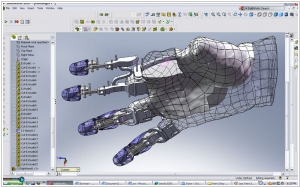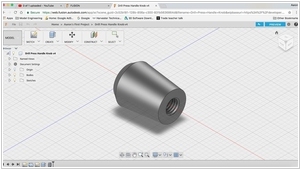Fusion 360 vs SOLIDWORKS
September 21, 2023 | Author: Michael Stromann
19

Solid modeling computer-aided design, computer-aided engineering, 3D CAD design an collaboration, analysis, and product data management software. SOLIDWORKS Cloud offer combines proven design and collaboration tools that allow you and your stakeholders to work together from anywhere, on any device, using a web browser.
Fusion 360 and SOLIDWORKS are both robust 3D CAD (Computer-Aided Design) software tools used extensively in engineering, product design, and manufacturing. However, they have several key differences that make each suitable for different design scenarios.
Firstly, Fusion 360 is known for its cloud-based platform, which allows for real-time collaboration and version control. Multiple users can work on the same design project simultaneously, making it a powerful tool for distributed teams. SOLIDWORKS, on the other hand, primarily operates on a traditional desktop-based model, which may require additional tools or plugins for efficient collaboration among team members. Fusion 360's cloud-based approach also allows for easy access to design files from various devices, which can be advantageous for designers on the go.
Secondly, Fusion 360 offers an integrated suite of tools, including CAD, CAM (Computer-Aided Manufacturing), and CAE (Computer-Aided Engineering), all within a single platform. This makes it an attractive choice for engineers and manufacturers who need end-to-end product development capabilities. SOLIDWORKS, while providing comprehensive CAD and simulation tools, typically relies on separate modules or add-ons for CAM functionality. Fusion 360's integration streamlines the design-to-manufacturing process, allowing users to test and prepare their designs for production more efficiently.
Lastly, the pricing models differ between the two software. Fusion 360 often follows a subscription-based pricing model, offering a more flexible approach with lower upfront costs. SOLIDWORKS typically requires a significant upfront investment for a perpetual license, which can be expensive for smaller businesses or individuals. The pricing model can be a significant factor in the choice between Fusion 360 and SOLIDWORKS, depending on the budget and needs of the user or organization.
See also: Top 10 CAD software
Firstly, Fusion 360 is known for its cloud-based platform, which allows for real-time collaboration and version control. Multiple users can work on the same design project simultaneously, making it a powerful tool for distributed teams. SOLIDWORKS, on the other hand, primarily operates on a traditional desktop-based model, which may require additional tools or plugins for efficient collaboration among team members. Fusion 360's cloud-based approach also allows for easy access to design files from various devices, which can be advantageous for designers on the go.
Secondly, Fusion 360 offers an integrated suite of tools, including CAD, CAM (Computer-Aided Manufacturing), and CAE (Computer-Aided Engineering), all within a single platform. This makes it an attractive choice for engineers and manufacturers who need end-to-end product development capabilities. SOLIDWORKS, while providing comprehensive CAD and simulation tools, typically relies on separate modules or add-ons for CAM functionality. Fusion 360's integration streamlines the design-to-manufacturing process, allowing users to test and prepare their designs for production more efficiently.
Lastly, the pricing models differ between the two software. Fusion 360 often follows a subscription-based pricing model, offering a more flexible approach with lower upfront costs. SOLIDWORKS typically requires a significant upfront investment for a perpetual license, which can be expensive for smaller businesses or individuals. The pricing model can be a significant factor in the choice between Fusion 360 and SOLIDWORKS, depending on the budget and needs of the user or organization.
See also: Top 10 CAD software



